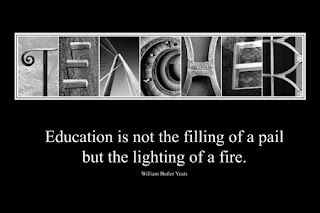Before we began the WalkThrough this Thursday, Principal J brought us to one of the empty classrooms and introduced us to a learning activity called Connections. This activity is a "time for individuals to reflect- within the context of a group- upon a thought, a story, an insight, a question, or a feeling that they are carrying with them into the session, and then connect it to the work they are about to do." Principal J explained that silence was OK and that you did not have to speak, but if you wanted to contribute, you could only do so once. A second comment or idea could be given, time permitting, once each member of the group had already gotten the chance to speak. From Principal J's explanation, I concluded that the main concept of Connections was to provide a group of individuals with the opportunity to share their thoughts, feelings, ideas, etc. during a period of time designated for Reflection NOT Discussion.
"Some people will say that Connections is misnamed, since people don't connect to (or build on) what other people have said. However, the process is a connecting one; and powerful connections can still occur, even though they are not necessarily the result of back and forth communication."
When the Connections session began, the silence in the room was slightly awkward. After a minute or so (which felt like an eternity!), a couple members of our group spoke about what was on their minds. I didn't have anything that I wished to contribute, so I sat there silently thinking about our experience at District C thus far. Once I became comfortable with the silence, it actually became refreshing and welcoming, sitting alone with my thoughts and listening to others' musings. Some of the comments sparked new thoughts and ideas in my head. I can definitely picture using this activity with my students. It would be a motivating lesson starter. I think what I liked most about the session was the opportunity it presented for every member of the group to communicate their ideas, even those who may normally sit quietly during a debate or discussion. In addition, Connections is a great way to facilitate and stimulate new ideas in the minds of all participating members.


.jpg)
.jpg)




